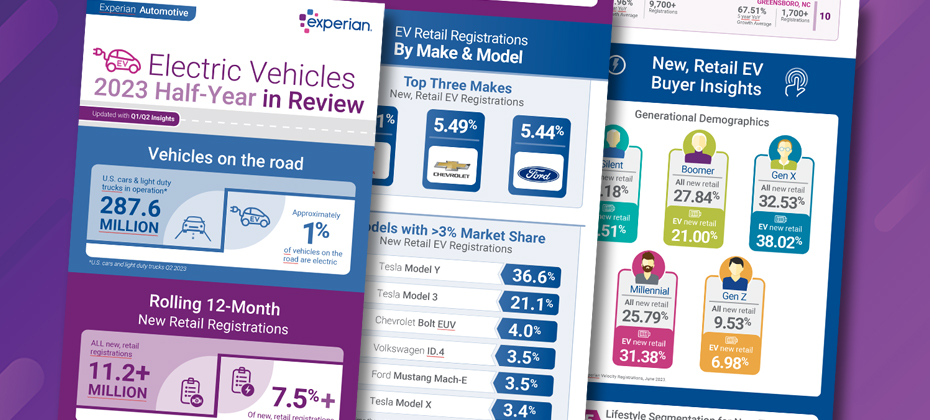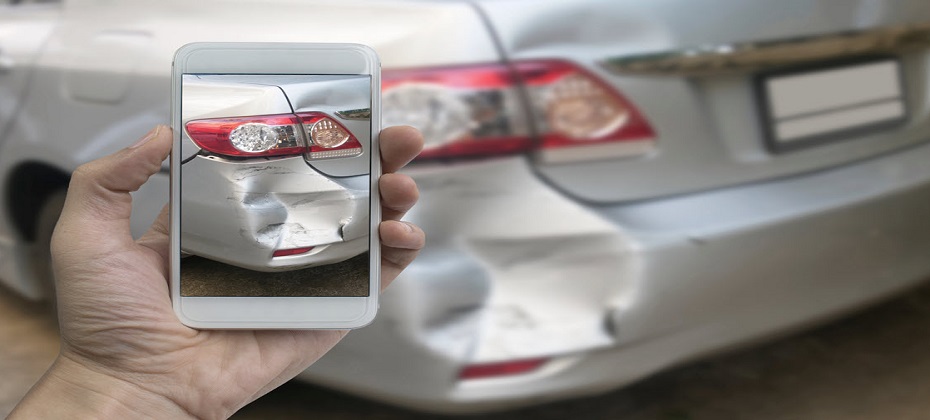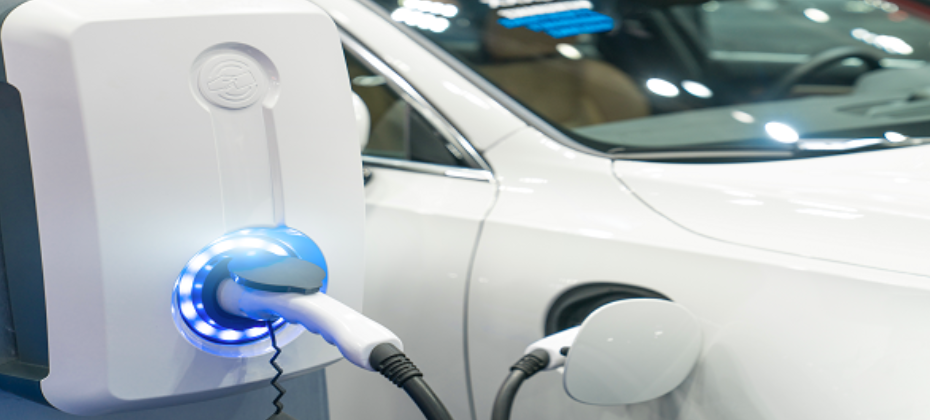All posts by Trish Radaj

Lemon vehicle history is a serious issue that can have a significant impact on the automotive industry. Buying a vehicle that is branded as a lemon may harm a dealership or the OEM's reputation. Customers may be less likely to buy automobiles from that manufacturer or dealership in the future if they learn the vehicle they bought was branded a lemon. Used vehicles with lemon vehicle history has implications Furthermore, automakers may incur higher costs as the expense of buying back and fixing lemon vehicles is frequently the responsibility of the auto manufacturers. Finally, the used automobile market may be impacted by a vehicle's lemon history. Used cars with lemon vehicle history events are frequently worth less than equivalent autos without such activity. New lemon-reported events analysis infographic available View our most recent Vehicle Insights Infographic Report: Lemon Reported Events Data Analysis. You’ll learn more about lemon-reported activity for vehicles, what percentage of owners repurchase a different vehicle after the initial reported activity, and how many vehicles with the lemon event history are still on the road. We have a series of vehicle insight infographic reports you may also be interested in: Water and Flood Reported Events Vehicle Accident and Damage Insights

Experian Automotive has updated our Electric Vehicles 2022 Year-in-Review Infographic Report with new 2023 Half-Year insights. In the previous report, we shared that over 6% of new, retail registrations were for electric vehicles. As we evaluated the current state of the Electric Vehicle Market for the first half of 2023 (January-June registrations), the percentage of new, retail registrations for electric vehicles has increased to over 7.5%. There are several factors driving consumer adoption of electric vehicles in the United States, including: Environmental concerns: Consumers are increasingly concerned about the environmental impact of transportation, and EVs produce zero emissions at the tailpipe. Government incentives: Many state and federal governments offer incentives for the purchase of electric vehicles, such as tax credits and rebates. Falling battery costs: The cost of lithium-ion batteries, the key component of EVs, has fallen in recent years, making EVs more affordable for consumers. Increasing availability of EV models: Automakers are releasing a growing number of EV models, giving consumers more choices to fit their needs and budgets. Despite the progress that has been made, there are still some challenges that need to be addressed to accelerate EV adoption in the United States. These challenges include: Lack of charging infrastructure: There is a need for more public charging stations, especially in rural areas and along major highways. High upfront cost: EVs can still be more expensive to purchase than gasoline-powered vehicles, even after factoring in government incentives. Range anxiety: Some consumers are concerned about the range of EVs, which can be limited compared to gasoline-powered vehicles. Despite the challenges, the future of electric vehicles in the United States is bright. Automakers are investing heavily in EV development, and the number of EV models available to consumers is expected to continue to grow. Additionally, state and federal governments are taking steps to support EV adoption, such as investing in charging infrastructure and offering incentives for consumers and businesses to purchase If you’d like to learn more about the current state of the Electric Vehicle market and buyer and how that market is growing and changing, check out our Updated Electric Vehicles Year in Review Infographic.

The 2023 hurricane season is upon us. This year, over 21 named storms were predicted for this year, and we have already seen storms make landfall. One of the biggest dangers that hurricanes pose to the automobile industry is vehicle water and/or flood damage. In 2022, FEMA paid out over $1 billion for flood damage to automobiles in the United States. This damage can have a significant impact on businesses in the automobile industry, including: New car dealerships: Flood damage can destroy new cars and trucks, forcing dealerships to replace them. This can be a costly proposition, especially in a time when supply chains are already disrupted. Used car dealerships: Flood damage can also damage used cars, making them less valuable or even unsalable. This can lead to lost revenue for used car dealerships. Auto repair shops: Auto repair shops may be called upon to repair flood-damaged vehicles. However, some flood-damaged vehicles may be beyond repair. This can lead to lost revenue for auto repair shops. Auto parts suppliers: Auto parts suppliers may also be impacted by flood damage. If factories that produce auto parts are flooded, it can disrupt the supply of auto parts to dealerships and repair shops. In addition, it is important to note that flooded cars may still be on the road. And these vehicles may not be in operation in the geography where the reported water and/or flood damage occurred. To help you stay up to date on the latest insights into flood damaged vehicles we’ve put together a complimentary Vehicle Insights: Water and Flood Reported Events Infographic. You’ll learn: • What percentage of owners repurchase a different vehicle after water or flood damage for their current vehicle • Where was the damage originally reported? • Where are vehicles with water or flood damage currently located? Download the Vehicle Insights: Water and Flood Reported Events Infographic Now! Here is another resource you may find useful to help mitigate the risk of purchasing flood damaged vehicles. Check out our Free AutoCheck Flood Risk Check.

We already know over 286 million cars and light-duty trucks are in operation in the United States and that 4 out of 10 of those vehicles have been in an accident. That’s over 114 million vehicles on the road that have been in an accident. However, have you ever wondered what happens to a vehicle after it’s been involved in an accident? Does the owner keep the vehicle or get rid of it? If they decide to purchase a different vehicle, how soon after the reported accident do they purchase it? Does the frequency and timing in which an owner household purchases a different vehicle vary based on the accident's severity? Does this vary by other factors, such as vehicle type? If so, what vehicles are owners most likely, and least likely, to dispose of after a reported accident? To answer these questions, we completed an internal 3-year analysis of over 15 million unique VINs from all 50 states, Washington D.C., and Puerto Rico. We created a new detailed report with all the data insights! Check out our complimentary Vehicle Accident & Damage Insights report today!

A funnel describes marketing and sales opportunities because it is the widest at the top and narrowest at the bottom. This is an accurate representation because only a fraction of consumers who enter a sales funnel will become buyers. At the top of the funnel, you find consumers exploring and learning about purchase options. These consumers respond to awareness-based marketing regarding vehicle features or comparisons. They are not typically focused on pricing but rather just learning about options. In the middle of the funnel is where you find customers getting closer to a vehicle purchase. They are evaluating their options, including new versus used, and exploring specific units on consumer sites. These consumers have moved beyond general market awareness and vehicle feature interest and into evaluating what vehicle features meet their needs and what price range and financing options may best suit their budget. During this time, marketing and sales contacts with specific incentives or vehicles of interest-based marketing are effective. Nearing the lower funnel As you near the lower funnel, you will find consumers who are initiating the process with the intent to purchase. These consumers are visiting consumer shopping sites for used vehicle research as well as dealer websites. Used vehicle consumers are visiting Vehicle Detail Pages (VDPs) and viewing vehicle history reports. These lower funnel consumers are exploring trade-in values and trying to put together their vehicle sale and purchase plan. There are many ways lower funnel opportunities interact with the automotive ecosystem. With improvements in digital retailing even when just one small part of the sales process is initiated prior to the consumer visiting the brick-and-mortar store, dealers have an opportunity to capture these lower-funnel consumers. Some effective examples include quick “sell your trade” links or prequalification links on web pages that allow consumers to obtain trade values/trade offers and, in some cases, to get full prequalification for loans. Often these digital retailing features are able to track and communicate to dealers about these lower funnel and fully engaged consumers. Take advantage of lower funnel leads with digital retailing tools As online digital retailing steps become more commonplace, dealers will find themselves leveraging these leads for sales. Utilizing effective, consumer-friendly, and secure functions that allow consumers to access or work through the components of a sale will maximize engagement. Keeping consumers tied to your website during the process can keep them working with your dealership processes. To learn how Experian Automotive can help you gain lower funnel opportunities, contact Mike Costanzo.

Dealers are always looking for reasons to connect with consumers. From back-to-school or graduation specials to holiday offers, dealers leverage seasonal and routine aspects of daily life to connect with consumers. Tax season offers a unique annual opportunity to position your vehicles and dealership for purchase by a consumer expecting a tax refund. In many cases, even consumers not receiving a hefty tax refund will be receptive to the tax time message. With the right strategy, message, and audience, you can market to consumers who are a few thousand dollars richer! Consider a tax refund match program Even if you are not in a position to offer consumers extraordinary sales offers, you may be able to create some special dealership-level seasonal offers that take your tax refund message to the next level. For example, offering a Tax Refund match program that offers consumers a discount off a vehicle matching the tax refund applied as a down payment would surely make your dealership stand out! Target consumers with service incentives What about consumers who did not expect refunds or have already spent them? Perhaps offering service incentives such as offering free tax filing software with the purchase of a prepaid service plan would be appealing. Or simply incentivize consumers to receive a discount coupon book during tax season to lighten the burden tax season brings.Tax season often sets the stage for the spring and summer vehicle sales season. Setting the stage by offering service incentives and tax refund matching programs creates rapport with your consumers that you can build upon. Start developing more effective marketing strategies The Experian Marketing Engine (EME) gives dealers and agencies the ability to build effective marketing plans by providing comprehensive market analysis along with powerful audience list creation. Tax time is just one of many messages dealers can deploy utilizing EME's solutions. At Experian Automotive, we leverage our world-class data set to give our dealer and agency clients unparalleled information to market effectively. If you find this topic interesting, you should read one of our others blogs, How to Effectively Use Audiences for Traditional and Online Marketing.

Experian Automotive has just released electric vehicle data insights in our 2022 Electric Vehicle Year In Review infographic.

In our continued efforts to make vehicle information and insights quick and easy to read for auto dealers, we’ve redesigned our AutoCheck vehicle history report. As competition for used vehicles remains high, dealers must make quick decisions on whether to acquire a potential vehicle. Whether you need to evaluate a trade-in or want to make a flat-out offer on a vehicle, quickly accessing the vehicle’s history is only the first step. We’ve made it even easier for you to get key information in our newly designed report. We are confident that the newly designed report will continue to help dealers better manage risk and confidently buy and sell the right vehicles.Did you know?• AutoCheck has data from over 95% of U.S. auction houses with 99.82% manufacturer coverage of open recall data for vehicles on the road • Experian aggregates and analyzes tens of thousands of distinct accident sources; many provided only to AutoCheck • AutoCheck has exclusive Auction Announcement data for up to 2.7% of vehicles in operation (that have been to an auction)• We’re the only VHR provider integrated on all the top consumer vehicle shopping sitesHow AutoCheck can help improve your business You may also be interested in learning how AutoCheck VHRs can improve your business by reading Vehicle Detail Pages with a Free VHR Have Higher Lead and Sale Conversion Rates or how we helped a large insurance company better manage risk in our case study, LexisNexis Helps Manage Risk for National Insurance Company. Learn more about the benefits of becoming an AutoCheck subscriber.

In the last decade, electric vehicle registrations have increased by 3,600%, and the demand for alternative fuel vehicles continues to soar. Manufacturers are rapidly expanding alternative fuel operations to keep up with the demand from consumers that has expanded across all generations. Target in-market EV consumers Today’s automotive marketers understand that finding targeted consumer audiences is critical to a successful marketing strategy. With more electric vehicle model options available and improved infrastructure driving popularity, we’re seeing automotive marketers wanting to target in-market EV consumers as well as current alternative fuel vehicle owners. Applying data-driven insights to find targeted consumer audiences is critical to today’s marketing strategies. For example, as of Q2 2022, 23.5% of plug-in hybrid owners that returned to market, migrated to an electric vehicle As a marketer, would it be helpful to select In-Market Likely Segment Switchers as your target audience for your marketing campaign? Or Hybrid owners as a whole? Experian Automotive has a variety of alternative fuel owner audiences and in-market consumer audiences to help marketers target the right consumer with the right message on the right channel. The Experian Marketing Engine Syndicated Auto Audience portfolio includes 70+ audiences focused on likely buyers and owners of Electric Vehicle (EV) and Plug-In Hybrid (PHEV) vehicles. Of Experian’s 750+ syndicated auto audiences, we offer a subset of over 25 audiences focused on individual EV/PHEV vehicle models. How to find EV audiences on your preferred platform Experian electric vehicle audiences are available in the Auto Audience area of your preferred platform. Simply navigate to Experian Automotive’s Audiences to find Electric Vehicle related audiences, as well as all of Experian’s Auto Audiences. To learn more about Auto Audiences for Electric Vehicles, contact our Subject Matter Expert, Gary Meteer.

Strategic automotive marketing and measurement are getting more complicated with the increase in consumer channels and devices. This makes it harder for marketers to obtain a complete measurement picture. Measurement terminology is also evolving. Here's a look at some of today’s key definitions to familiarize you with the nuances and challenges it may already bring to your analytics. What is the open web? The open web is the web as a whole or the public side of the web with all the millions of sites that do not require a subscription or fee to use them. For example, in our industry, this would be an auto manufacturer’s website, a dealership’s website, or an online consumer shopping portal where you list your vehicles for sale – all of these are on the open web. These sites use open-source standards to deliver content to consumers without a separate app or company acting as gatekeepers. However, tracking approaches on the open web will shift as cookies will eventually disappear. What is a walled garden? A walled garden is a closed platform or ecosystem (e.g., Amazon, Apple, Facebook) wherein the platform provider controls the content, applications, and/or media and restricts access as it sees fit. The publisher offers consumer privacy and rich first-party data to advertisers, but the measurement is limited to activity within the ‘walls’ of the garden. From an advertising perspective, buyers can only access these platforms through their own buying tools; they do not give access to any independent platforms. The publisher (the Walled Garden) handles all the buying, serving, tracking, and reporting within their ecosystem. So, let’s say you are an automotive consumer checking out vehicles. If you’re reading your Facebook feed on your phone and you see an advertisement for a vehicle or a dealership, that OEM or dealership is advertising in a walled garden – in this case, the walled garden is Facebook. The challenge to an advertiser is that they can only measure activity that occurred within that ecosystem using the walled garden’s platform and measurement tools. What is a hedged garden? The “hedged garden” is a new industry concept. A hedged garden is when a network of publishers work together to activate first-party data sets in a privacy-compliant way across many partners at scale. These publishers run their businesses with large amounts of first-party consumer data. They often do not own or operate complete buying stacks. For example, companies like Target and Walmart let advertisers employ their data on shoppers for ad targeting, but brands can use their own buying tools. Other examples of a hedged garden might include Connected TV platforms such as Vizio’s or Samsung’s in-house ad businesses. If you’re sitting on your couch watching your Vizio-connected TV and you see an advertisement for a dealership or a manufacturer, they are advertised within that hedged garden. As an advertiser, the advantage is that you can use their buying tool when targeting shoppers for your advertising. How to fill in the gaps the walled garden may leave open The walled garden can challenge marketers who desire cross-channel activation and measurement. If you're a marketer working within a walled garden, we can work with the data you have to give you a complete picture of your audience’s digital journey. Our experience and vast databases, including vehicle, credit, and customer insights, allow us to continue building strong partnerships within the fast-growing (Hedged Garden) ecosystem. We can help. Our Subject Matter Expert, Laurel Malhotra will be happy to answer any questions you may have. Contact her today.

In honor of all the marketers who frantically created and activated audiences for Cyber Five sales (Thanksgiving Day through Cyber Monday), this blog announcing a resource for automotive marketers on how to best activate their automotive audiences is timely! I realize the following spending stats are totals for consumer spending, not just automotive consumer spending, but these dollar amounts put advertising and media spending into perspective. Adobe Analytics reported that consumers spent $35.4 billion online over the Cyber Five period this year, breaking a record. Many marketing campaigns ran on various channels to reach that many consumers. Strategic campaign development is key to effective activation Marketers know all the hard work that goes on behind the scenes before media is activated. As automotive marketers, let’s recap what typically happens before activation even begins. It is common to begin by linking fragmented consumer data across channels, platforms, and devices into unified customer profiles for more effective cross-channel targeting. Using identity solutions helps marketers target the right consumers on the right channels. After unifying customer profiles, marketers often look at auto-specific market, vehicle, and consumer data insights to help gain a deeper understanding of market competition and opportunities, vehicle interest, and critical consumer information (demographics, psychographics, etc.) Next, many marketers leverage automotive, lifestyle, and predictive data to target specific consumer segments across all channels for true omnichannel marketing. Once this is complete, marketers can choose their audience, depending on what their goals are and which channels they are focusing on. Once all this pre-work is finished (and I over-simplified all the hard work behind these steps), marketers need to Activate their campaigns by selecting the best channels. Leverage various media partners and platforms At Experian Automotive, we believe marketers can improve their ability to reach their intended audience participants and measure their overall campaign results if they are strategic during Activation. Leveraging various media partners and platforms allow marketers to activate audiences more effectively and execute more strategic, measurable, multi-channel marketing campaigns. The key is to find a vast network of media destinations and onboarding capabilities that empowers you to activate audiences and connect with a single audience across channels delivering personalized, addressable experiences. To help auto marketers understand all the areas of Activation, we’ve written a resource, How to Activate Your Audience on the Most Strategic Channels, that you can download now. We’ve also written these other resources to help automotive marketers use data insights to develop more strategic, measurable marketing campaigns. They are all complimentary so feel free to download them too! Identity Solutions: Helping Marketers Deliver Personalized Communication for Life Audiences: Automotive Audience Choices are Key to Ever-Changing Strategies Customer Insights: Understand Your Customer Before Choosing Your Audience Measurement: Measuring Marketing Performance is Critical to Long-Term Succes

When your marketing strategies don’t go as planned, don’t you wish you could have taken a “mulligan?” In today’s marketing world, it’s normal and critical to measure marketing effectiveness.

Did you know that GenX had the most Hybrid owners migrate to Electric Vehicles in 2021? And believe it or not, the next group behind GenXers were Boomers! That’s right, not millennials or GenZ…Boomers! We have many more details to share on the Electric Vehicle segment and the consumers in that segment who buy them in our newly released Experian Automotive Consumer Trend Report: Q2 2022. Every quarter, Experian’s Automotive Consumer Trends Report provides insights into specific vehicle segments and the associated consumers within that segment. This quarter focuses on the Electric Vehicle (EV) market. The report answers these questions: How many EVs are on the road? Where are they located? How have recent EV registrations shifted the geographic distribution? Which manufacturers are selling those vehicles? Who is taking market share from whom? Who are the consumers who registered those vehicles? What are the demographic and psychographic insights for those consumers? There are two ways to receive the report information: Watch the on-demand presentation of the report while our analyst provides critical insight & analysis OR Download a PDF version of the report At Experian Automotive, we understand that marketers need to deeply understand consumers to develop targeted, effective marketing strategies. Whether you are an OEM marketer, an agency, or an auto dealer, our presentation will transform complex market data into actionable insights that you can begin using immediately.

The AutoCheck FREE Flood Risk Check site has been updated with data from Kentucky, Colorado, Texas, and Missouri floods New cars continue to be in short supply due to the microchip shortage, so consumers quickly turned their attention to used cars. Unfortunately, dealers continue to struggle with obtaining enough used car inventory to meet demand. To add to an already challenging time, Mother Nature has brought record flooding in multiple areas of the United States. It’s more important than ever that dealers be careful about obtaining pre-owned cars that could potentially have flood damage. The best way to mitigate the risk of purchasing a flood damaged vehicle is to start by running an AutoCheck Free Flood Risk Check. Visitors simply enter any vehicle's 17-digit VIN and the tool will check for flood brands and provide information if the vehicle was registered in a region impacted by a FEMA disaster declaration. Two levels of reporting available The first level of reporting determines whether the vehicle has been titled/registered 12 months prior in a county that has been identified as requiring public and individual assistance (FEMA categories A and B) for a FEMA-declared major disaster. This would yield a “Yes” result. For instance, you would get a “Yes” result if the vehicle was registered in an impacted area during the time of a FEMA-declared major Hurricane disaster. The “Yes” result should not be interpreted as confirmation of flood damage or even possible flood damage. The data is provided merely as information regarding the location of the vehicle’s registration/title history so users can be aware of risk exposure. For example, the Hurricane Ida region had thousands of damaged cars, but some cars in the region may not have been damaged by the hurricane — the owner could have driven the car when they evacuated, or a child or other family member may have been out of town with the car when the hurricane hit. The second level of reporting is based on search results from Experian data such as flood title and problem records, including flood State title brands, auction flood announcements, salvage auction flood designations, and other vehicle records determined by Experian to relate to or suggest an increased likelihood of flood damage or risk exposure. It takes time for claims and updates to vehicle title information to appear on a vehicle’s history and although the DMV requires that title brands be issued for vehicles damaged by floods, not every vehicle flood event is reported by car owners. Unreported flood events may not appear on an AutoCheck Flood Risk Check or AutoCheck Vehicle History Report. Although Experian provides flood related records from available data sources, we cannot provide assurance that an AutoCheck Flood Risk Check that does not produce any records means that the subject vehicle has not experienced flood damage. That’s why it’s important to review a full AutoCheck Vehicle History Report, which—in addition to potential flood damage—includes reported accidents, branded titles, recalls, number of owners and more. Once you run the full Vehicle History Report we recommend an independent evaluation and inspection of the vehicle to determine and confirm a vehicle’s condition prior to purchase. Try the AutoCheck Flood Risk Check today to help mitigate the risk of purchasing flood damaged vehicles. Not an AutoCheck subscriber? Contact us to become an AutoCheck client.

To help your marketing dollars go further in 2022, developing multichannel strategies that more efficiently incorporate both traditional and online consumer audiences is key to more effective campaigns. Doing this well requires marketers to understand your consumers and how they best respond to marketing, including what channel (direct mail, email, OTT banner ads) or what message (vehicle reliability, value for dollar, celebrity endorsement) works best. Working with the right partner for audience insights enables you to segment audiences and filter for automotive criteria that drive more targeted, segmented marketing. What are traditional audiences? In most cases, traditional (sometimes referred to as offline) audiences include consumers reached through radio, standard TV, billboards, text, direct mail, or phone calls. To fulfill any traditional audience strategy, a dealer or agency requires consumer Personally Identifiable Information (PII) such as name, email address, mailing address, or phone number. Traditional marketing has also been called direct marketing when the marketing is sent specifically to a home address, email address, or phone number. For instance, when utilizing direct mail, automotive marketers require the most up-to-date consumer information to ensure they reach the correct mailbox. To reduce cost and personalize the marketing experience, the best marketers utilize audience sources based on strong data sets unique to the automotive world. For example, targeting consumers driving a particular vehicle or nearing the end of their lease is more effective than just sending a generic message to an entire geographic area. Even with the explosive growth of digital marketing, direct marketing remains relevant. Consumers still respond and use offers sent to their mailboxes, and personalized mailers still result in vehicle sales or service appointments. While there is a higher cost per thousand than digital marketing, direct marketing still earns an essential place in the automotive retail media mix. What are online audiences? Online audiences are typically consumers reached through 0ver-The-Top (OTT) advertising, banner ads, or addressable TV. When using these marketing channels, PII is not needed. Online marketing can encompass many different methods to reach customers, including social media, email, websites, blogs, and search engine traffic. Nearly every business will benefit from online marketing because it's a great way to reach people where they already are—online. Online marketing has grown in a digital world where so many people rely on their cell phones to organize their day, conduct research, and communicate with the world. According to Tech At Last, “most households now have between 5 and 10 screens. Those numbers include tablets, PCs, notebooks, smartphones, and televisions. These devices include any screen that enables users to watch or read content.1 Audience modeling can help simplify the chaos of digital channel segmentation Utilizing digital channels allows marketers to reach consumers where they increasingly spend their time. Whether it is their Inbox, streaming service, social media, or other digital platforms, knowing consumer preferences makes the marketing experience more meaningful. In other words, capitalizing on audience modeling to determine the best channel and how the consumer engages with the channel can make all the difference. For example, to showcase your new Hybrid, you may not want your video advertising shown on a YouTube channel about construction! The same commercial would resonate far better on a channel with DIY or gardening shows. To best capitalize on addressable TV, 0ver-The-Top advertising, or banner ads, marketers should work with an audience provider who can identify targeted segments based on psychographic, demographic, and geographic data allowing for more effective marketing. Look for a provider like Experian Automotive that can deliver a robust database, extensive consumer insights, and deeply established partnerships for audience activation (social media or TV), allowing your marketing dollars to work harder with extended reach. Whether you are looking to reach consumers online or traditionally, reaching the right consumers with the right message on the right channel is always the goal. To achieve this, working with a third party for audiences built on clean data is necessary. If you can segment the audiences or filter for automotive criteria, your marketing dollars and messaging will go farther! 1TechAtLast (2014) The Average Number of Screens in a Home Has Increased